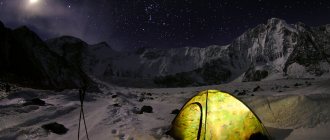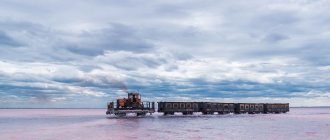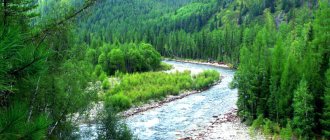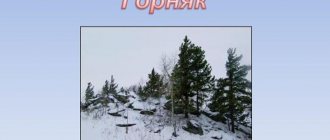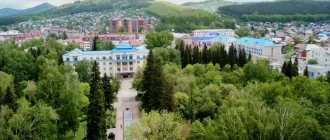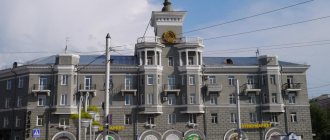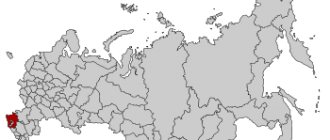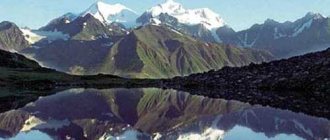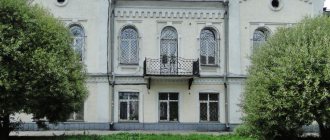RSS newsletter Characteristics of the Altai Territory
HomeSocio-economic development Characteristics of the Altai Territory
Brief description of the Altai region
Altai region
located in the southeast of Western Siberia, on the border of continental Asia, 3419 km from Moscow.
The territory of the region is 168 thousand square meters. km, in terms of area it ranks 21st in the Russian Federation and 6th in the Siberian Federal District. In the north, the region borders with the Novosibirsk region, in the east - with the Kemerovo region, the south-eastern border passes with the Altai Republic, in the south-west and west - the state border with the Republic of Kazakhstan, the length of which is 843.6 km. At the beginning of 2021, the population was 2.3 million inhabitants
(1.6% of the Russian population). A distinctive feature of the region is the high proportion of the rural population - 42.9% (in Russia - 25.3%).
10 urban districts in the region
and
59 municipal districts
.
The administrative center is Barnaul
.
Two types of landscapes predominate in the region: in the east – mountainous, in the west – flat. The Altai region is characterized by a rich flora and fauna. The region contains almost all natural zones of Russia: steppe and forest-steppe, taiga, mountains and rich river ecosystems.
Altai has huge reserves of various natural resources. Mineral resources are represented by deposits of polymetals, iron, table salt, soda, gypsum, brown coal and precious metals. The region is famous for its unique deposits of jasper, malachite, porphyry, marble, granite, building materials, mineral and drinking waters, and medicinal mud. The region is rich in forest resources. The forest fund makes up more than a quarter of the territory of the region and covers an area of 4433 thousand hectares. Of the 13,000 lakes, the largest is Kulundinskoye, with an area of 728 square meters. km. The largest rivers are the Ob, Biya, Katun, Alei and Charysh.
The economy of the Altai Territory is an established diversified complex. Industry, agriculture, and trade significantly predominate in the structure of the gross regional product
. These types of activities form about 50% of the total GRP.
The modern structure of the industrial complex of the region is characterized by a high share of manufacturing industries (over 80% of the volume of shipped goods), the leading of which are the production of food products, the production of engineering products (carriage, boiler, diesel, electrical equipment), coke production, as well as chemical production , pharmaceutical production, production of rubber and plastic products. At the same time, about 40% of the volume of the manufacturing sector of industrial production falls on the food and processing industries.
The Altai Territory is the largest producer of organic food in Russia: it ranks 1st in the country in terms of production volumes of flour, cereals, cheeses and cheese products, dry whey; 2nd place - in the production of butter, 3rd place - in the production of biologically active food additives, 4th place - in the production of pasta.
The agricultural complex is a large sector of the region's economy. The basis of the region's agriculture is the production of grain (including durum wheat), cereals and industrial crops, as well as livestock breeding. In terms of arable land area, the Altai Territory is the leader in the Russian Federation; the region accounts for a third of the arable land of the Siberian Federal District. The Altai Territory ranks 2nd in the Russian Federation in terms of the sown area of grain and leguminous crops. In 2022, the grain harvest in weight after processing amounted to 4.0 million tons
(12th place in Russia), the region retained its leading position in the country in terms of production volumes of spring wheat, buckwheat and oats.
The Altai Territory is the only region from the Urals to the Far East that grows sugar beets: in 2022, sugar beet production amounted to more than 1.2 million tons
. The region also gained a foothold in the top ten regions of the country in terms of production of sunflower oil seeds, took 4th place in Russia for rapeseed and 2nd place for oil flax.
In terms of the volume of production of livestock products among the constituent entities of the Russian Federation, the Altai Territory traditionally occupies a high position (4th place in milk production, 6th place in the production of high-quality beef). In terms of the number of cattle in all categories of farms, the region consistently ranks 4th.
The labor resources of the Altai Territory, trained by scientific and educational institutions of various profiles, are characterized by a high professional level and are able to satisfy the need of a developing economy for scientific research and highly qualified personnel for the implementation of innovative projects and the placement of technologically new production facilities.
The Altai Territory is located at the intersection of transcontinental transit freight and passenger flows, in close proximity to large raw materials and processing regions. Highways connecting Russia with Mongolia and Kazakhstan, a railway connecting Central Asia with the Trans-Siberian Railway, and international airlines pass through the territory of the Altai Territory. In terms of its availability of transport routes, the Altai Territory exceeds the average Russian and Central Siberian indicators. The favorable geographical location of the region and its high transport accessibility open up ample opportunities for establishing strong economic and trade ties at the interregional and international levels.
The recreational potential, combined with the favorable climate of the south of Western Siberia, and the rich historical and cultural heritage provide an opportunity for the development of various types of tourism and sports and entertainment recreation in the Altai Territory. Currently, the most popular among residents and guests of the region are medical and recreational, cultural and educational, children's, rural, event, and active types of tourism. Promising directions for the development of the tourism industry include environmental, ski, automobile, and medical types of tourism.
Geographically, the Altai Territory is divided into 2 enlarged tourist regions - Stepnoy Altai
and
Piedmont Altai
, each of which has its own unique characteristics. For Steppe Altai, these are numerous fresh and salt lakes with healing and healing properties. For Piedmont Altai, these are picturesque mountain landscapes, the presence of unique natural objects of display (the Lebediny reserve is one of 2 places in Russia where swans winter) and historical monuments (the archaeological monument of Denisova Cave), the development of a sanatorium-resort area (the only resort of the federal values in Siberia - the resort town of Belokurikha).
The region is not only a recognized health resort in Siberia, but also one of the largest resort centers in the Russian Federation, including 41 sanatorium and resort complexes
for 8.1 thousand places for one-time accommodation, including 7 children's institutions, in which
about 160 thousand people annually recover their health
. The region has valuable medicinal resources; mineral medicinal and medicinal table waters, sulfide silt mud, and medicinal plants are used.
The undisputed leader of the sanatorium and resort complex of the region is the resort town of Belokurikha
, which in recent years has been recognized as the best federal resort in Russia (there are 17 sanatorium and resort complexes located here, including 2 children's health resorts at the regional and federal levels). The development of Belokurikha as a center for health tourism is associated with the creation and development of the new site “Belokurikha Mountain”. This is a project to build a completely new resort, within which a range of modern health and entertainment services will be provided. During the implementation of the project, more than 3 thousand comfortable accommodations will be created, as well as the necessary engineering and transport infrastructure. Every year the resort city is visited by more than 200 thousand tourists and excursionists.
Also one of the leaders in the development of tourism infrastructure in the region is the Altai region, bordering the Katun River with the Altai Republic. Federal level projects are being implemented on its territory. A special economic zone of tourist and recreational type “Turquoise Katun” has been created here.
and
the Siberian Coin gambling zone
. According to expert estimates, more than 500 thousand tourists and excursionists visit the territory of the Altai region every year.
Also, with the involvement of federal budget funds (within the framework of the federal target program “Development of Domestic and Inbound Tourism”), such large tourist clusters as “Belokurikha”, “Barnaul - Mining” have been created in the Altai Territory. With the completion of this program, the development of these sites continued at the regional level, and the project to create a new resort "Belokurikha Mountain" received support at the federal level as part of the tourist cluster "Belokurikha - Altai Foothills" through the "Tourism" subprogram of the state program of the Russian Federation "Economic Development and innovative economy".
In order to develop active types of tourism and recreation in the region, with the involvement of funds from the regional budget, the development of the sports and tourism cluster “Tyagun”
.
2 million tourists visit the region annually
.
In 2022, the Altai Territory was among the 10 anchor tourist regions
, determined by the Federal Agency for Tourism to popularize holidays in Russia, and also entered the TOP 10 of the National Tourism Rating of Russian Regions, formed by the Center for Information Communications "Rating" and the magazine "Rest in Russia".
In 2022, the region was awarded leading awards in the tourism industry at the Russian level. Three projects of the Altai Territory became winners and prize-winners of the National Award in the field of event tourism Russian Event Awards 2022, six projects became winners of the federal competition aimed at developing domestic and inbound tourism (with a total amount of support of 13.5 million rubles).
Publication date: 03/31/2021
Transport features of Altai
Altai transport : the main feature of the region is the almost complete absence of railway transport, but to this day the easiest way to get to Altai is by train.
The largest railway stations are located in Barnaul, Biysk and Novosibirsk.
There is also an airport in Altai, which is located in the city of Gorno-Altaisk. Tourists can arrive here by plane from Moscow, as well as from Krasnoyarsk and Novosibirsk. Flights are carried out by S7 air carrier.
There is also an airport in Barnaul; Aeroflot, Transaero, S7 and UTair fly here from Moscow.
The cities of the Altai Territory are connected by bus service. Minibuses run around the cities. There is a bus station in Barnaul, from where you can go to Biysk, Karakola, Gorno-Altaisk, Chemala, Katun and many other cities.
Of course, you can travel around the Altai Territory by car.
The most beautiful highway in the region is 52, it turns into the famous Chuysky tract. Authors: … …
Personal tragedy
Roman Drokov said that the shooting of horses is not the only incident recently. In early January, a trailer on their farm, where they could rest and warm up, burned down. But the man does not connect these two events.
As for the version that the horses could have interfered with someone, the younger Drokov dismisses it. He says that when grazing freely, they used an “electric shepherd” - they surrounded the area with a low-voltage wire.
Roman Drokov
Photo: Alexey Kucheryavykh
The man talks about the shooting of horses as a personal tragedy. His children are very worried about what happened; they communicated with animals from the cradle and were very attached to them.
“This is an atrocity, only non-humans could do this,” says Roman.
The man believes that those who committed this vile crime should spend at least a couple of years behind bars in order to “properly think about what they have done.”
